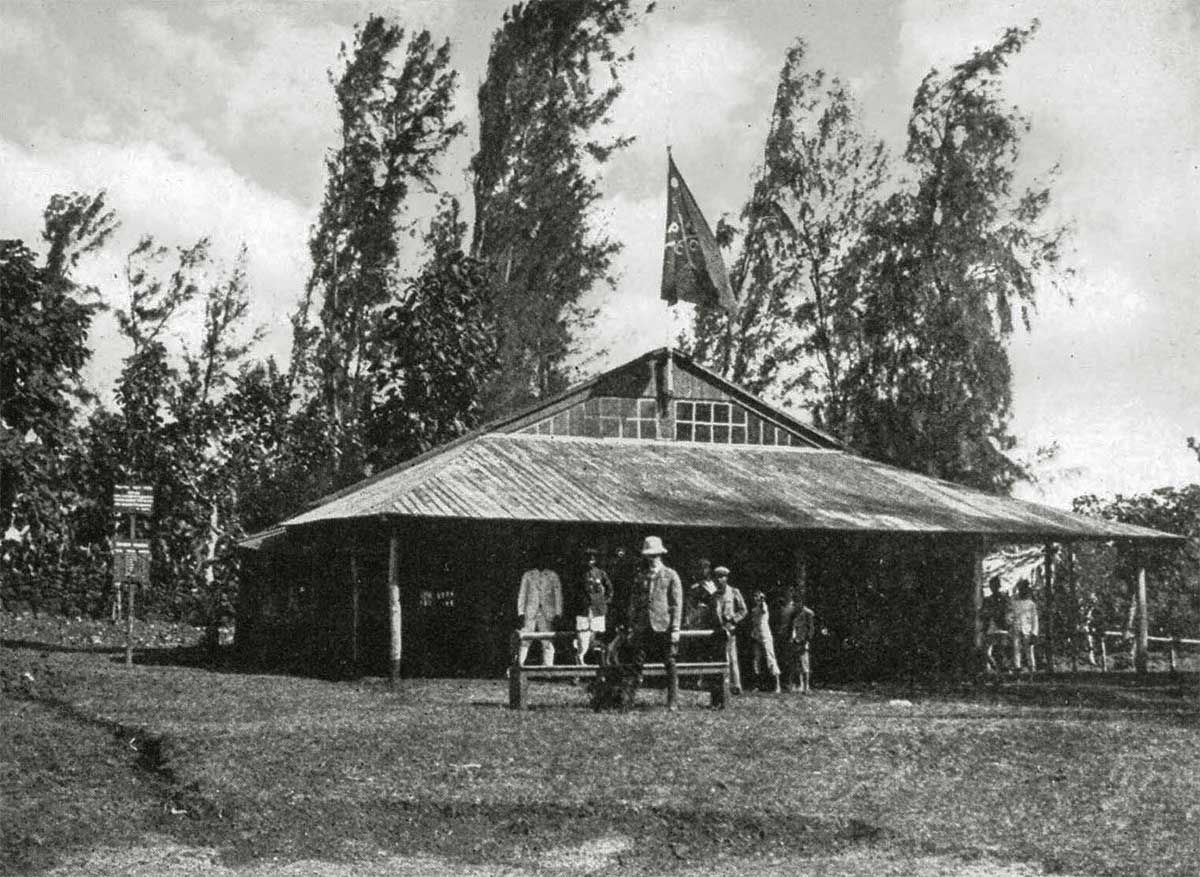Some of us have heard stories from old Bandra residents, of a Golf Course that existed in the Chuim – Danda area, close to the sea. At first, such a place seems a little too fantastic, perhaps even a little hard to believe, since all traces of this once important and grand landmark are now wiped out.
In the early 20th Century, there existed a 9-hole golf course known as “Danda Green” that straddled Pali (Hill), Danda, and Chuim, and what is now mostly a wasteland behind Union Park, close to Khar end of Carter Road. It is now only identifiable as an empty plot of land that contains a junkyard inhabited by squatters and used as a fish-drying ground.
Chuim, (previously known as Chooee, and also Juvkem), was a village of Bandra before it was de-linked from Bandra and incorporated into Khar (just as Juhu, previously known as Juvem, was de-linked from Santa Cruz and given a separate entity). Hence though this land now lies in present-day Chuim and Danda (or Dandem as it was once known), it was once very much a part of Bandra.
Danda Green was also known as the “Pali Hill Golf Club”. The most definitive description of the Golf Course and the surrounding area was published 115 years ago, in an article that appeared in “The Badminton Magazine”, issue dated August 1906. The author, a certain W. P. Pechey, in his article titled “An Indian Golf Links”, describes the areas as such:
“Twelve miles north of Bombay, just across the creek which separates Bombay Island from the adjoining island of Salsette, lies the village of Bandra. Not many years ago Bandra was a collection of mud huts; now it has developed into an important suburb, with a service of fast trains to and from Bombay; and it and its neighbouring village, Pali, are rapidly becoming covered with bungalows. Pali, or Pali Hill, as it is more commonly called, is, in the language of the guide book, a small eminence on the south-west corner of Salsette, charmingly situated amidst groves of palms and mangoes, bounded on the one side by the azure waters of the Arabian Sea, and on the other by the low-lying rice fields where the patient ryot toils for his daily bread. Here, we may add to this effusion, a European community has settled, and in due course, a golf link followed their arrival.”
Pechey talks about the Golf Course as being about forty acres in size, and the golf links being about 2200 yards long. The course had 9 holes, each having a name. There also was a rationale as to why some of the holes were named so. These were:
- Plas Greaves (named after a palatial building near the links, built by the club’s president as a country residence)
- Casuarina (named after a tree)
- Mango (named after a tree)
- Hill-side
- Punch Bowl
- Cliff
- Sethdavie (named after a village adjoining the links)
- Danda (named after a village adjoining the links)
- Rotten Row (named after the rough and stony ground next to the adjoining path, – the path which, interestingly, led to Versova)
In Pechey’s opinion, the last two holes were the worst in the course, and the best ones were the first, fifth and sixth. The course also had two ponds, which were called tanks, and which were close to overflowing in the rains. The ground itself is described as being full of loose stones, and the golf club had “spent hundreds of rupees in labor” to get rid of these stones, but such efforts came to nothing. The putting greens were described as being more brown than green, because “grass greens were just not possible”.
Other descriptions of the golf course and Club talk about how golf balls cost two rupees and the course was surrounded by stone walls, cactus hedges, paddy fields, and even a graveyard! The clubhouse was described as small, and one that provided no luxuries. It was “not pucca built”, but made from old railway wagons, held together by screws and nails.
Pechey also described what was perhaps the most important element of the course – the caddies. They were paid “an equivalent of 2 pence for each round of nine holes” of the course. He praises them by describing them as being ones that did not talk much and marked down the ball exceedingly well.
Interestingly enough, the boys of Danda village also made golf clubs, which were bought by the Pali Hill Golf Club, and hung on a board in the clubhouse, for use by members. This shows the local skill and talent that existed in the area, over a century ago.
In this book “Juvkem that was, Chuim that is”, Fr. Milton Gonsalves tells us that golf ceased to be played at Danda Green around the year 1950, and after that, boys from Danda used it as a ground to play hockey and cricket.
Today, the said area bears no resemblance to the grandeur of the past. There is nothing “golf-course like” left about the former Danda Green. For most, it is where the fisherfolk dry their catch. In the heat of the summer, the distinct and strong smell of drying fish from these grounds wafts through the air, all the way up to the Avenues of Santa Cruz. The road around the now-wasteland itself is often avoided due to a combination of traffic bottlenecks, and the not-so-pleasant aroma (to some) of fish being dried. And so, though the Golf Course is long gone, and as the area continues to changes every day, some still look back with fond memories of Bandra’s “Danda Green”.




























